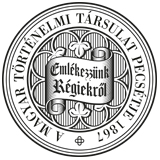Századok – 2010
TANULMÁNYOK - Dominkovits Péter - Pálffy Géza: Küzdelem az országos és regionális hatalomért. A Nádasdy család, a magyar arisztokrácia és a Nyugat-Dunántúl nemesi társadalma a 16-17. században (1. rész)
792 DOMINKOVITS PÉTER - PÁLFFY GÉZA the lay elite. For his descendants, on the other hand, the greatest challenge was presented by the necessity of remaining part of this elite. Although in the 1570s and 1580s and in the 1620s and 1630s the family's influence on the national level declined, for reasons outlined in the study, the lost positions were relatively quickly regained in both cases. That it was so is borne out by the fact that between the accession of Tamás to the lay elite (1536) and the captivity of judge royal Ferenc (1670) the Nádasdy family remained constantly within the top ten in the hierarchy of the lay elite (see Table 2). In the course of these 135 years there were only 59, or, not counting minorities, 29, years, when the the Nádasdy family was not represented among the first ten leading office-holders of the realm. Moreover, during half of this period the Nádasdy held one of the five top offices, which means that they successfully maintained themselves in the highest spheres of the Hungarian political elite. Nevertheless, the Nádasdy family had to share the positions of power with others even in their homeland in Transdanubia. As regards the post of district captain-general, in charge of the military administration of the region, the Nádasdy were clearly pushed to the background by the Batthyány, who held the post in the 16th and 17t h centuries for almost twice as long as the Nádasdy (see Table 3). On the other hand, they were as clearly ahead of the other aristocratic families of the region, the Zrínyi, who possessed the whole Muraköz, included. And they successfully compensated their losses in the field of military administration by their dominance on that of the civil administration. An analysis of the persons leading the counties of Vas, Sopron and Zala as főispánok (supremus comes) has revealed that these post were characterised by the dominance of the Nádasdy family (see Table 4). On the one hand, the Nádasdy were the only Transdanubian family which furnished a főispán for each of the three counties. On the other hand, the three posts were filled 30 percent by members of the family, thus by far outshining their rivals from the Batthyány, Bánffy and Esterházy families. And, last but not least, the county of Vas was directed by members of the family in an unbroken series from 1537 to 1671, an achievement which was only followed by the Esterházy in Sopron after the rise of Miklós (1583-1645), that is, from 1626.
